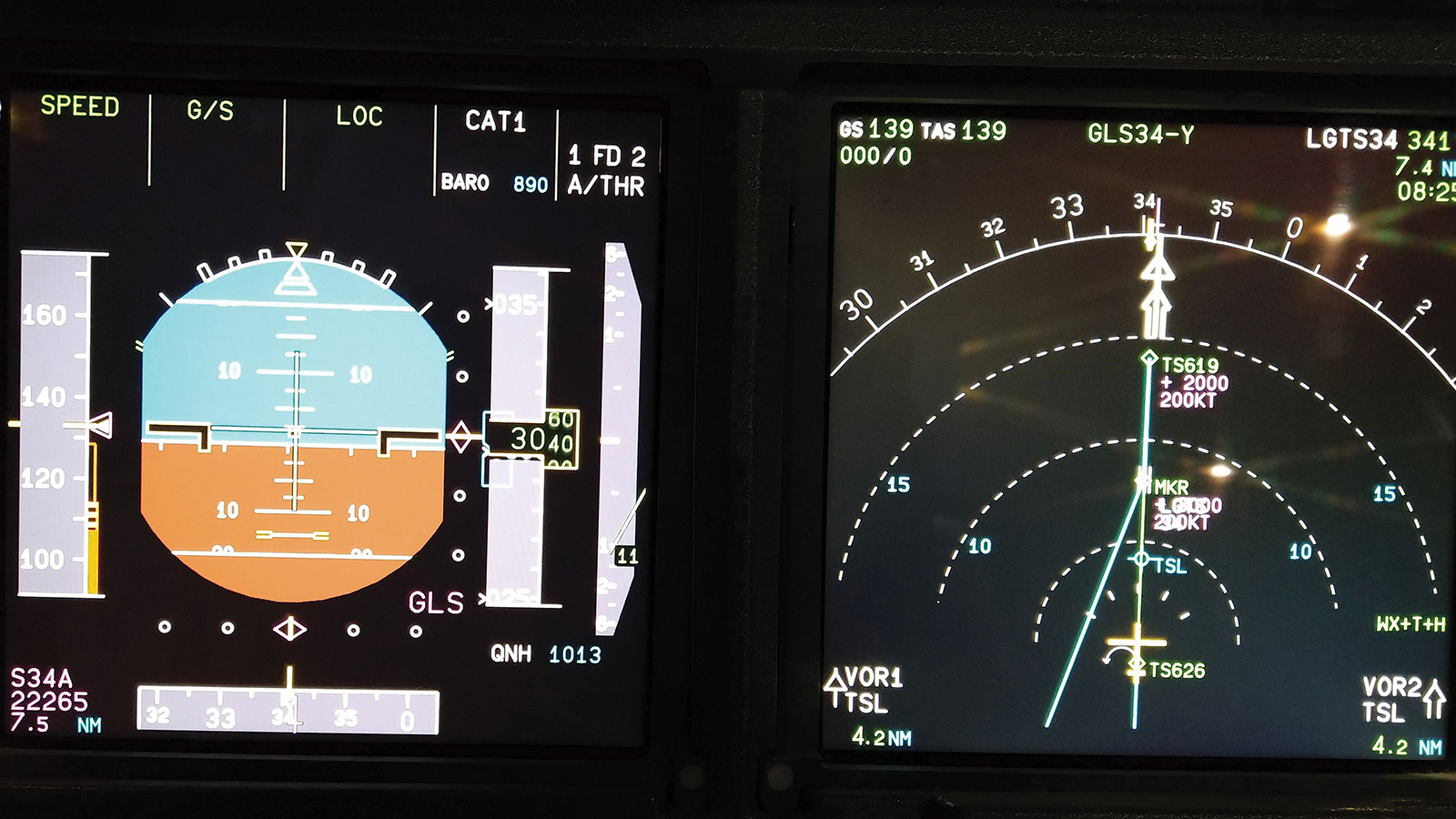Stay Up to Date
Submit your email address to receive the latest industry and Aerospace America news.
The Digital Avionics Technical Committee advances the development and application of communications, navigation and surveillance systems used by military and commercial aircraft.
DLR, the German Aerospace Center, implemented and flight tested its GPS Landing System Approaches Based on Satellite-Based Augmentation System, or GLASS, in Salzburg, Austria, and Thessaloniki, Greece, in February with its A320 Advanced Technology Research Aircraft. DLR had tested GLASS in Braunschweig, Germany, for the first time in May 2019 using a Lufthansa Airbus 319, when DLR also used the system to perform an automatic landing. At many small airports, the regional SBAS is the only service available for approach in low-visibility conditions. However, air transports are more commonly equipped for GLS, which employs the Ground-Based Augmentation System. To enable GLS-equipped aircraft to fly approaches using SBAS, DLR developed GLASS. It uses a ground-based SBAS-capable receiver to determine the differential GPS corrections, which are uplinked to the GLS-equipped transport with the glidepath procedure using the same VHF datalink as GBAS. It is a cost-effective way to enable satellite-based approaches with vertical guidance within the SBAS service area for aircraft equipped for GLS. Since the system combines SBAS and GLS, most components are already certified, and recertification is not required.
In August, Mosaic ATM and teammate Honeywell completed an Unmanned Aircraft System Command and Control Link Management System, or C2LMS, validation laboratory. The laboratory implements three communication link types: terrestrial cellular, C-band line of sight and L-band satellite communication. The L-band service is provided by the Inmarsat Ground AERO Gateway; the C-band LOS links use two radios; and the terrestrial cellular links use a Rohde and Schwartz Cellular Wideband Radio Communication Tester. Mosaic and Honeywell used the lab at the end of the year to design and develop validation test cases and to support software for the C2LMS, which is part of the performance standards that RTCA Special Committee 228 is developing for UAS command and control. The C2LMS specification contains 23 interworking requirements and 17 security requirements, all of which the Mosaic/Honeywell team must validate.
In Europe, new regulations took effect in February requiring air navigation service providers to offer Controller Pilot Data Link Communication services and airspace users to be capable of using such services for operations at least 28,500 feet above sea level.
The Datalink Support Group met in January, May and September to advance the datalink implementation in Europe. The European Organization for the Safety of Air Navigation, the European Aviation Safety Agency and the Single European Sky Air Traffic Management Research Deployment Manager established the group in September 2019. Datalink is recognized worldwide as the key enabler for new methods of air traffic management that increase traffic density and improve operational efficiency, as well as support scalability. In Europe, datalink technology is paving the way for the implementation of the Single European Sky ATM Research program solutions in which datalink integrates ground-based ATM systems with the avionics to enable 4D trajectory management and other advanced concepts. The standard datalink technology in service is the VHF Digital Link Mode 2, but the use of this technology has been hindered by technical and operational deficiencies that prevent the datalink’s full benefit from being realized.
Contributor: Mark Darnell
Related Posts
Stay Up to Date
Submit your email address to receive the latest industry and Aerospace America news.




